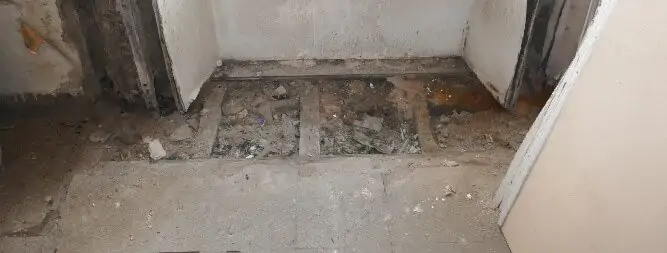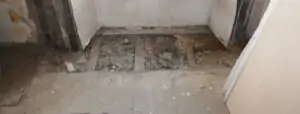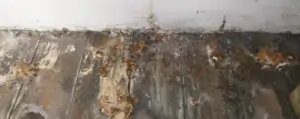

What is Dry Rot?
Serpula Lacrymans, otherwise known as Dry Rot is a type of fungi that grows on timber. There are six groups of fungi that are generally recognised to grow on timber, which include Brown Rots, White Rots, Soft Rots, Stains, Moulds and Plaster Fungi. Only brown and white rot breaks down timber hence leading to serious damage, with Dry Rot being classified as a type of Brown Rot.
The Dry Rot feeds off the cellulose in the timber which allows it to spread, leaving the timber dry and brittle. A usual tell-tale sign that Dry Rot has attacked timber is the distinct cuboidal cracking across and with the grain of the timber. Other visible signs include darkening of the timber, the timber becoming brittle and a distinctive ‘mushroom’ odour.
Dry Rot requires specific conditions in order to grow and spread. Key requirements include damp or wet wood (moisture content above 20%), a suitable temperature of around 15-22°C and the presence of oxygen. The most common situation Dry Rot is identified is where Timber is in contact with wet brickwork.
The life cycle of Dry Rot is typically described in four main stages;
- The life cycle begins when collections of dry rot spores come into contact with the timber in the correct conditions. Although individual spores cannot be seen with the naked eye, collections of spores form a reddish dust.
- Once in contact with the timber, the spores will germinate, producing Hyphae, which is a tube like thread and resembles fine strands or roots. A mass of Hyphae eventually form, known as Mycelium. As the Hyphae multiply and feed on sugars within the timber known as cellulose, the timber gradually decomposes and loses strength.
- Mycelium looks like a cotton wool type mass and spreads from timber through other building materials such as bricks and mortar to find new timber to feed on.
- The fungus also produces sporophores which is a self-reproduction organ. The sporophore sheds orange-coloured spores into the atmosphere, which can then land on timber and if the environment is right, the life cycle of the rot begins again.


What are the differences between Dry and Wet Rot?
It is a common question we get asked as building surveyors; what the difference between dry and wet rot is. Both forms of rot are caused by fungal spores in timber which develop when the conditions are optimal. The main difference between the two is, Wet Rot, as the name suggests requires a much higher moisture content (50%) in the timber than Dry Rot (20%). This means that Wet Rot is more likely to form on timber that has been exposed to a persistent source of water such as leaking pipes etc.
There are also visible differences between Dry and Wet rots. Wood rotted by Dry rot is light in weight, crumbles under touch and the wood often cracks in a cuboidal pattern. Dry Rot Mycelium has the appearance of white turning grey silky sheets. If the appearance is light in colour, this is known as a White Rot. As all White Rots are types of Wet Rot, this can be used to distinguish Wet from Dry Rots. Strands of Dry Rot Mycelium can become brittle if dried overnight, which can be used to distinguish between similar coloured Wet rot Strands.
How to treat Dry Rot?
As Dry Rot will only effect damp timber, removing the source of water ingress must be the first priority to eradicating an outbreak of Dry Rot. Common causes of water ingress include leaking pipes, shower trays and baths, condensation, leaking roofs or penetrating damp through walls.
Once the source of water ingress has been removed, the affected area of the building should be left to fully dry out, ensuring the moisture content of the timber is below 20% to stop the growth of the fungus. This can be a very time-consuming process, depending on the level of dampness, however specialist drying methods could be adopted to reduce drying times.
It is not always possible or practicable to wait long periods of time for the area to dry out completely. The use of secondary measures will therefore need to be relied upon, however in cases where these measures are required or damage is extensive, the cost of treatment will be high. The full extent of the outbreak should be determined, before removing all rotten wood, cutting away 300 – 400mm beyond the last indications of rot. Remaining sound timbers may need treating with chemicals and replaced sections of timber should be preservative treated.
If you believe you may have a Dry or Wet Rot which is affecting your property, our experienced, chartered surveyors can help. We will diagnose the cause of the Rot and provide expert advise on how to deal with it.
DISCLAIMER: This article is for general information only and not intended as advice. Each project has its own set of unique circumstances, all potential issues should be investigated by a surveyor on a case by case basis before making any decision.



